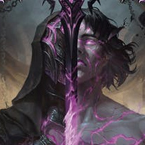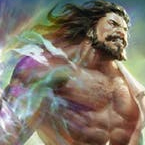Chane, Bound by Shadow is a Living Legend.
For many players out there, this- along with the departure of Starvo- comes as a welcome change. In tandem with the release of Uprising, the Classic Constructed format is about to feel very new, fresh, and unsolved. The curious will make sure the three new heroes are represented until they find their competitive footing, while die-hard fans of heroes that were suppressed in the meta by our dearly departed legends will be ready to re-emerge.
But where does that leave the Chane players? I played Chane during Road to Nationals, both Pro Quest seasons, and the Pro Tour. Where do Shadow Runeblades go from here?
Answering that question requires an honest evaluation of why you were playing that deck to begin with. People play card games for a lot of reasons, and to figure out where it might be best to next direct your attention, we need to know what drew you to the hero in the first place.
Power. Playstyle. Flavor. Feel. Specific powerful cards. Synergy packages. Being the first intro deck you played. Any of these factors and more could have led a player to Chane.
For some players, it was raw power. Chane's power level, and that of Seeds of Agony (now un-suspended in CC, but with no hero able to utilize it), became apparent fairly quickly during his one Road to Nationals season.
For others, it was a chance to play a different type of go-wide game plan. Viserai could sometimes attack multiple times per turn, but at that point he was still sporting more of a midrange setup style of deck, and Chane represented a very different style within the same class.
Power. Playstyle. Flavor. Feel. Specific powerful cards. Synergy packages. Being the first intro deck you played. Any of these factors and more could have led a player to Chane. And they will serve as guidance for where to go after Chane.
Power
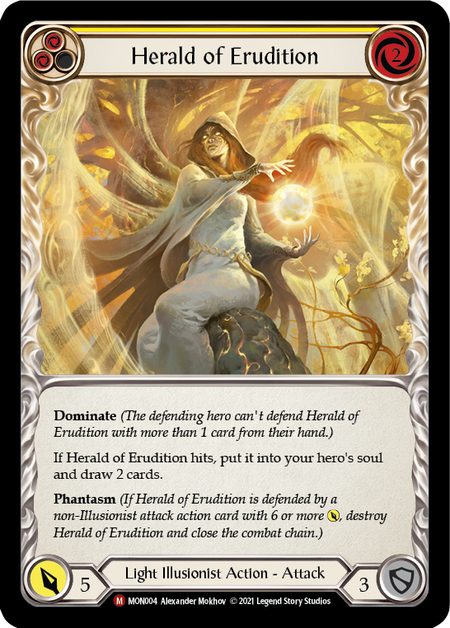
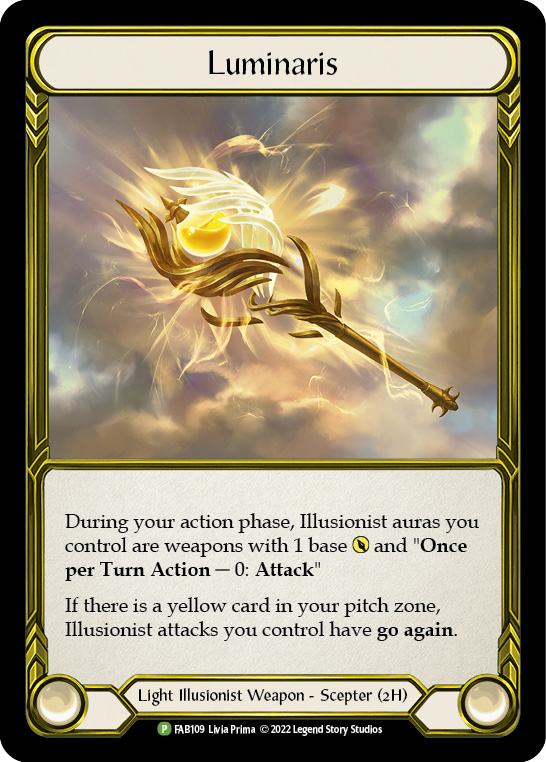

There will always be players determined to play the best deck in a given format, and it'd be foolish to not assume that the one remaining hero from last season's Tier 1 Trio won't play a prominent role in the new meta. Prism is likely to be the third hero to hit Living Legend, and she even got some new toys in Uprising. New, aggressive decks like Fai, and old ones like Briar and Katsu that were previously held back by the presence of Starvo, should see a resurgence and help keep the aura heavy builds in check. But one thing all of those decks have in common? Not a lot in the way of 6 power cards…
Playstyle
It's tough to distill Chane into one specific playstyle, but he ranges somewhere between a go-wide aggro deck and a synergy deck with a combo finish.


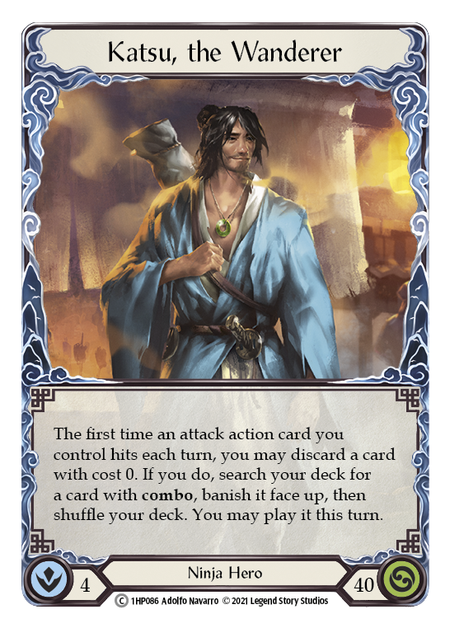
Briar, Fai, and Katsu are all able to consistently threaten high damage turns. Fai best encompasses the go wide aggro plan, utilizing his draconic synergies and Phoenix Flames to regularly attack 5-6 times in a turn.
Katsu is the most consistent of the three, able to threaten explosive turns via Harmonized Kodachi, Even Bigger Than That, and his various combo lines. Katsu also has the added bonus of being able to play a midrange style with a few sideboard packages, shifting his deck to be better suited for offense or defense depending on the matchup.
Briar is the closest of these to Chane in playstyle, given their shared class emphasis on a mixture of attack and non-attack actions.
Each of these heroes is capable of popping off for 20-40 damage, which will certainly be enough to give your opponent some Chane flashbacks
Flavor

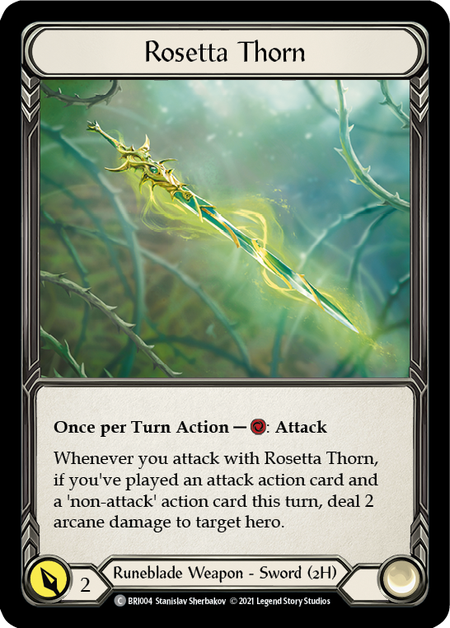
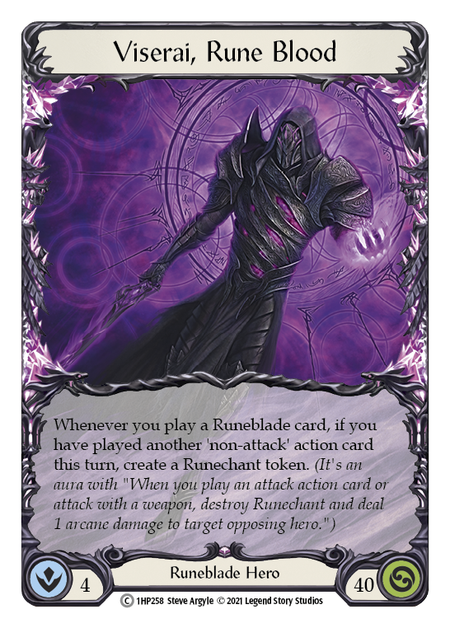
When it comes to flavor, it's hard to find a better match for Chane than the OG Runeblade himself. As the one who opened the doorway to iArathael, Viserai played an important role in Chane's story, and he is effectively the reason Chane was able to make his arrangement with Ursur. Both hail from the Demonastery, so the general vibe, theme, and art style on the cards is pretty consistent between the two.
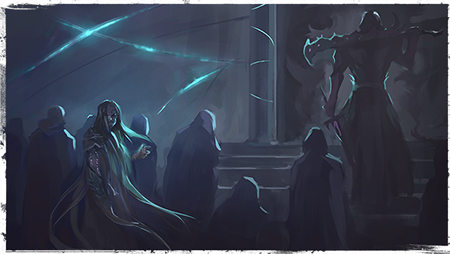
If you're disappointed that Viserai doesn't have his very own demon friend, I wouldn't worry. Have you seen the art on Runic Reclamation? Viserai's demon has yet to truly be revealed, but I am confident we'll see him before too long.
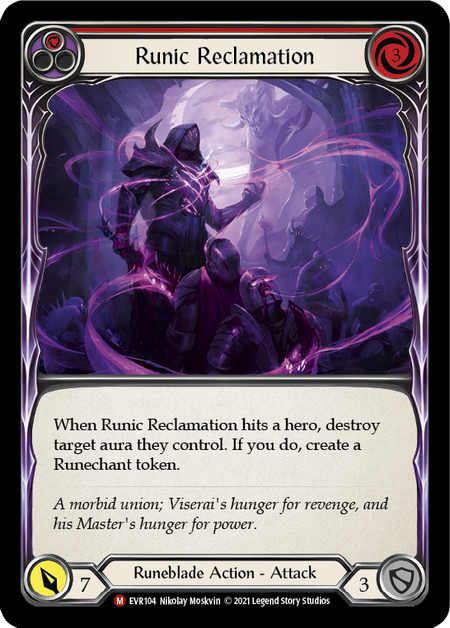
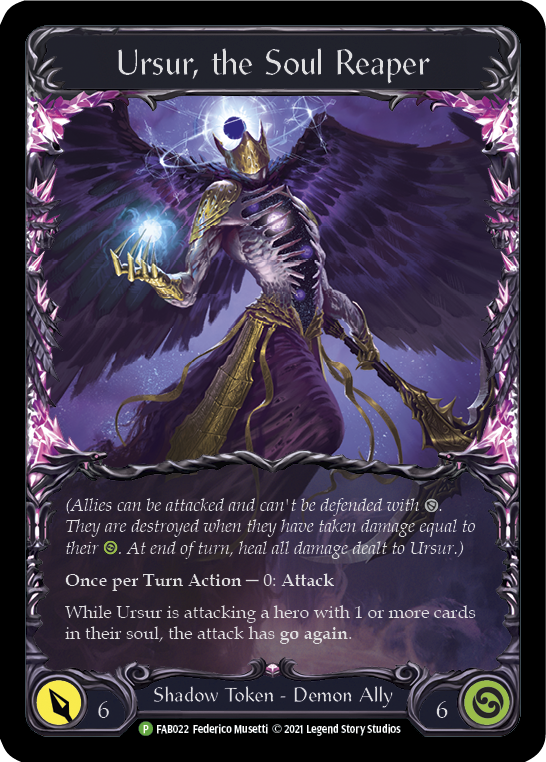
Unique Play Patterns
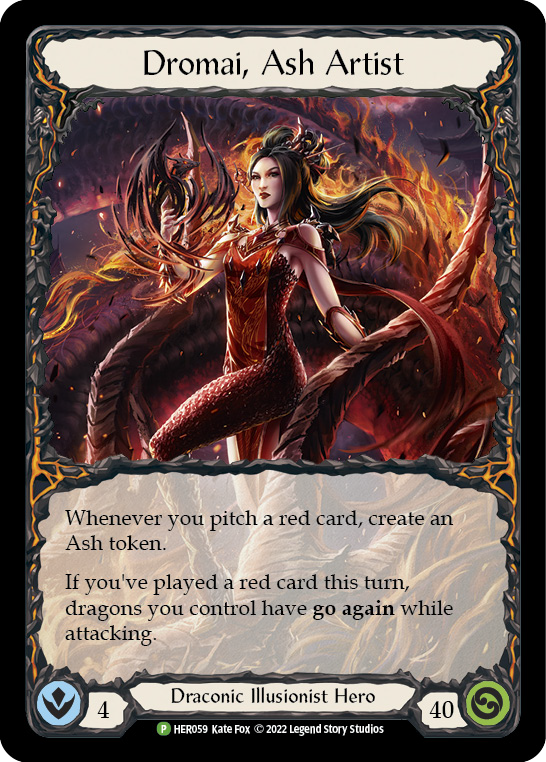
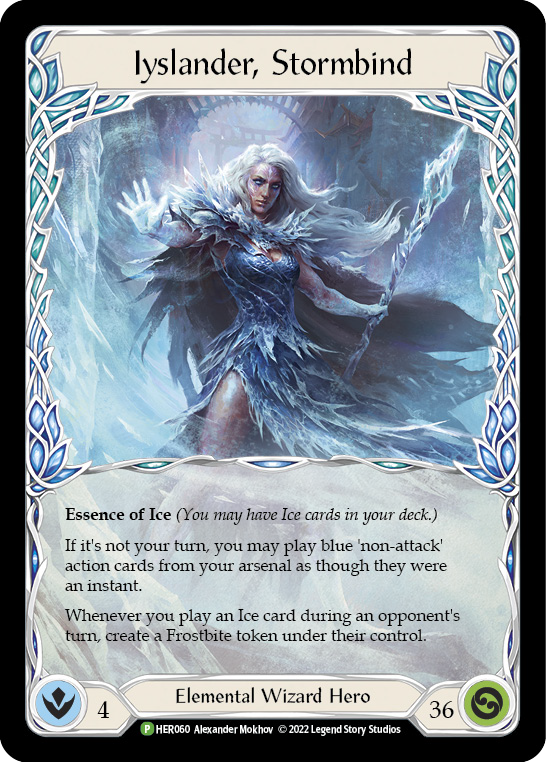
Chane has a number of play patterns that are pretty unique in Flesh and Blood. For some, the uniqueness is more important than the actual patterns, and if that is the case for you, I'd encourage you to give Dromai or Iyslander a try.
Dromai attacks on an axis only previously seen in Aura Prism builds: establishing a board state. Where Prism plays a deck full of auras to short circuit opposing turns due to Spectra, Dromai builds board states via Dragon Allies. The play patterns are definitely unique in the game, and I personally looking forward to figuring out the enigma that is Dromai.
Iyslander also sports a very interesting combination of game plans. She brings the Icy disruption capabilities of Lexi, Oldhim, and Starvo, and combines it with the arcane damage previously only seen from Kano. This allows her to play a tempo control gameplan, doing her best to disrupt her opponents while chipping away with arcane damage, or she can play a slower game, pitch stacking while setting up a trio of Frost Hexes and wiping out the opponent in one fell swoop.
Synergy Packages
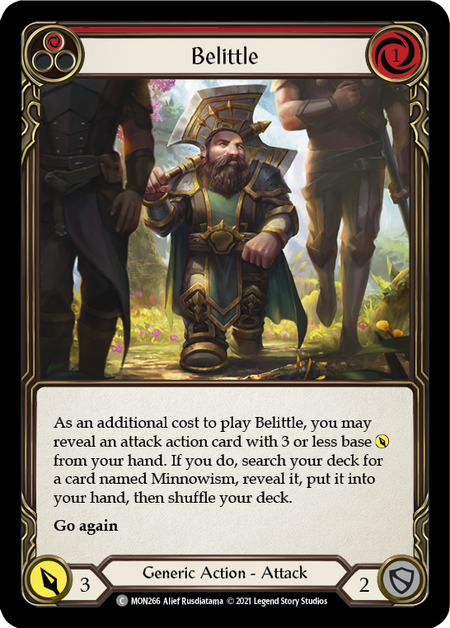
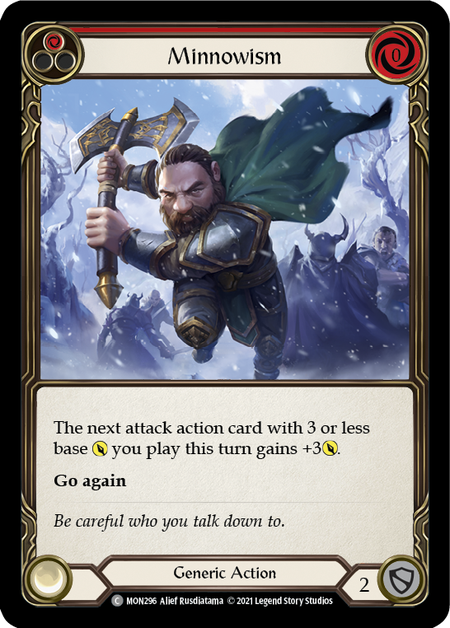
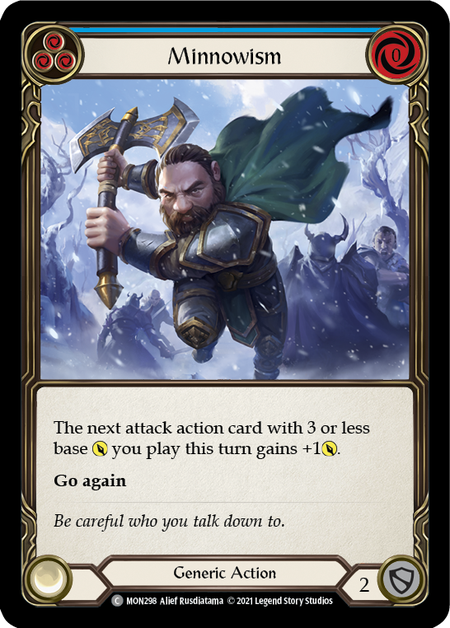
Often referred to as "the other 3 copies of Art of War" in Chane, the Belittle/Minnowism package often looks like a 1 resource attack for 6 with go again or an attack for 3 with go again that nets you 2 resources. There are a number of heroes that can take advantage of this synergistic duo, but I think the two capable of using it best are both new Uprising heroes. Fai and Dromai both naturally sport plenty of other 3 cost attacks while also receiving a benefit for playing red attacks with natural go again (and if you like it here, you'll also love the Flamecall Awakening/Phoenix Flame package).
Fai makes use of it in a straightforward way, either to get 2 resources from the singleton blue Minnowism he'll be playing or to just get some extra damage for this turn or next.
Dromai gets some added value, as she can grab a red to pitch to make an Ash and still play something else. Aggressive builds of Dromai using the full set of Transmogrify should probably be playing close to the maximum number of Belittles.
Builds of Briar, Viserai, and Katsu have also popped up at various points in time. Vexing Malice, Shrill of Skullform, and Swarming Gloomveil make of the core of accompanying attacks for the Runeblades, while Katsu was already running plenty of cards with base power 3 or less.
Shared Cards
For some, the answer to why they played Chane was "I had the cards." Generic staple cards like Enlightened Strike and Command and Conquer can obviously be found in many other decks, but here are some options to help make use of many of the cards you were probably playing in Chane.
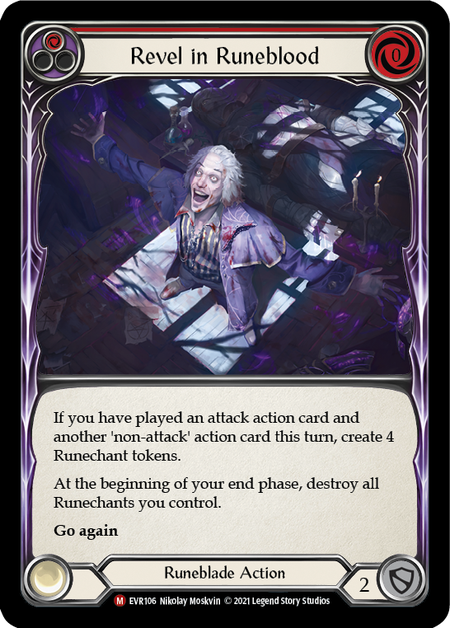
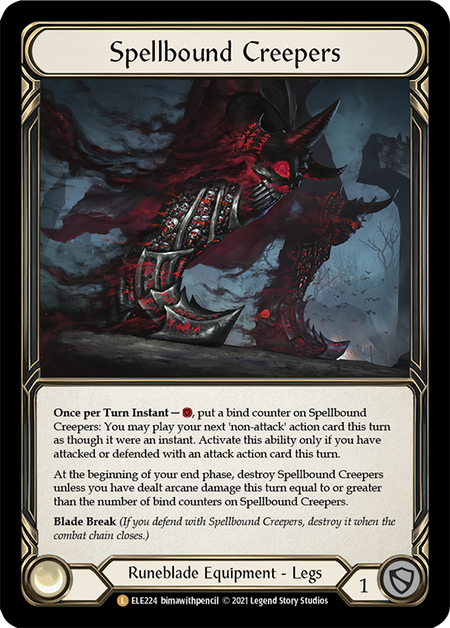
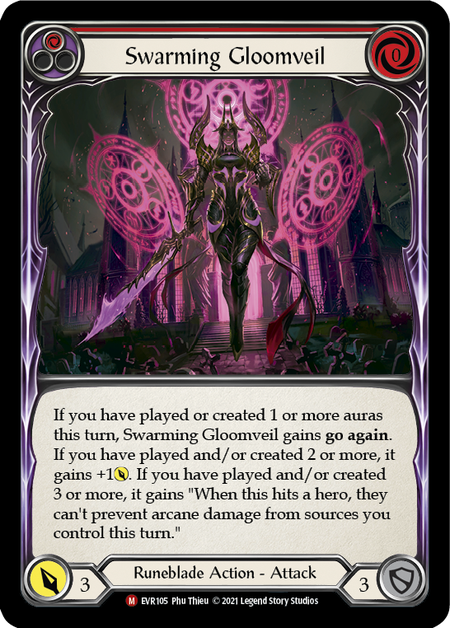
Unsurprisingly, fellow Runeblades Viserai and Briar have the most overlap with Chane, largely due to the equipment suite. Rosetta Thorn, Aether Ironweave, Grasp of the Arknight, Spellbound Creepers, Vexing Quillhand, and Crown of Dichotomy can all reasonably be played in any of the Runeblades, not to mention generic equipment such as Arcanite Skullcap and Snapdragon Scalers. Gorganian Tome sees play for each hero, along with the majestic additions from Everfest: Swarming Gloomveil, Revel in Runeblood, and Runic Reclamation. Viserai also makes good use of Chane's suite of resource cards in Mauvrion Skies, Vexing Malice, and Shrill of Skullform.
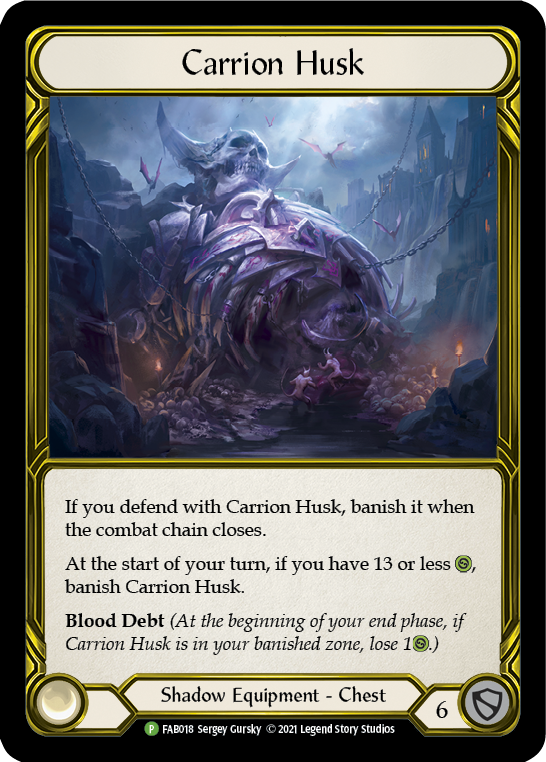

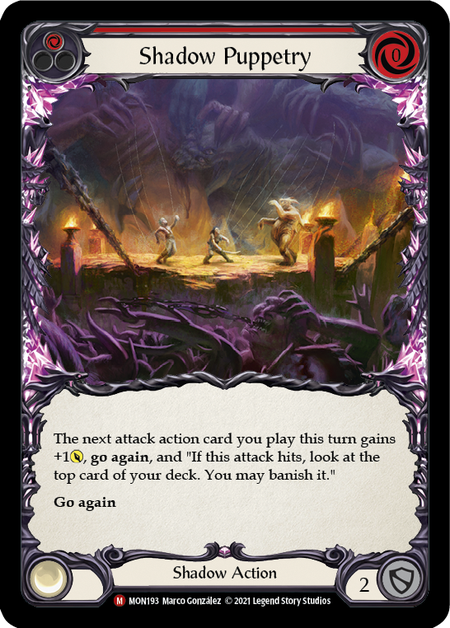
If the Shadow cards are what you fancy, Levia, Shadowborn Abomination is your girl. Carrion Husk, Ebon Fold, Shadow Puppetry, Ghostly Visit, Howl from Beyond, Void Wraith, and generic powerhouse Art of War all see some play for our eldritch lady, and she certainly captures the more monstrous aspects of the Demonastery.
"But Kevin, all I want to do is play more Chane!"
Fear not, loyal disciple of Ursur! There are still ways to get your Shadow Runeblade fix while we await a new champion in a future set.
Blitz Chane: https://fabdb.net/decks/nwJVreWJ
Commoner Chane: https://fabdb.net/decks/VJqkzpyn
Chane in Blitz even has the added virtue of still getting to play with Plunder Run!
"But Kevin, all I want to do is play more Chane in CC!"
Have I ever steered you wrong? There is a bit of good news to come with Chane, Bound by Shadow hitting Living Legend, and that is that this gem will be getting unsuspended:
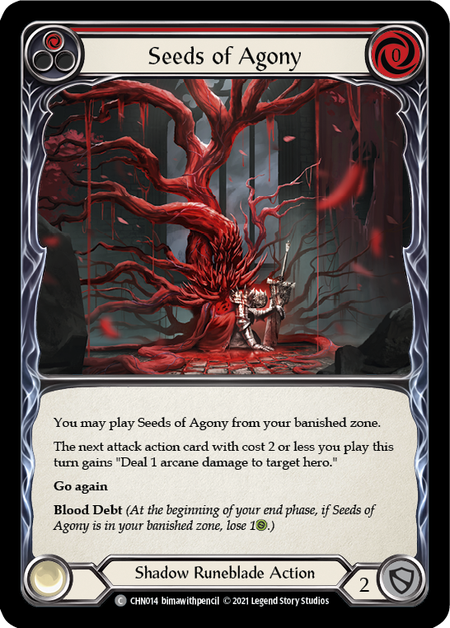
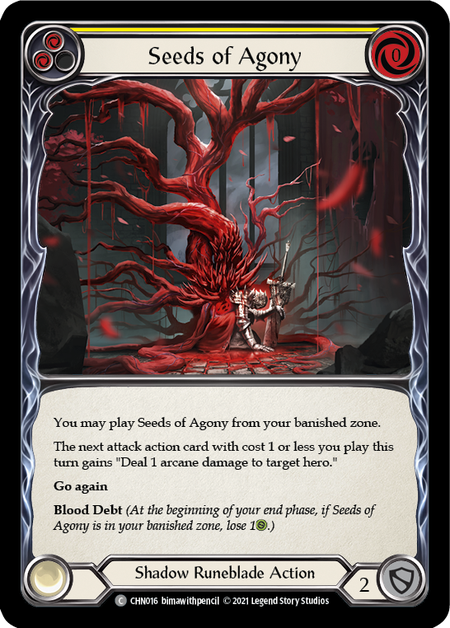
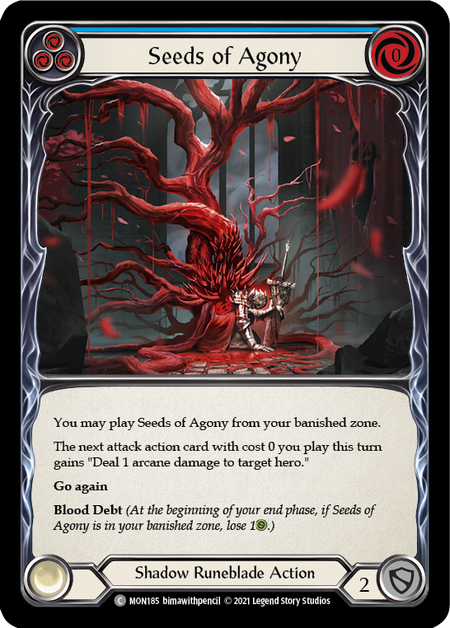
As the young iteration of Chane is a distinctly different hero from Chane, Bound by Shadow, there is nothing stopping you from reliving Chane's glory days (albeit on hard mode).
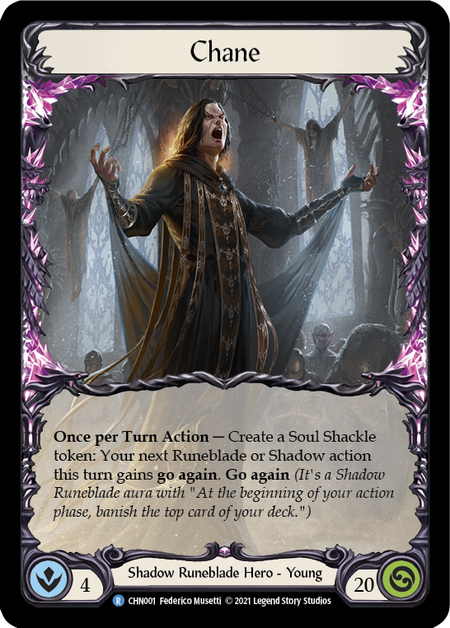
Young Chane starts with 20 life, even in CC, but you have Carrion Husk, and have you ever played with Seeds of Agony? Young Chane has already made Top 8 in a Pro Quest without Seeds of Agony. Pour one out for Azalea fans, because it's entirely possible that a young hero scores Living Legend points before she will.
Living Legend
Lastly, I will leave you with this gem. The Living Legend format will be upon us before we know it, and it will behoove us to be ready for its arrival. I built this assuming that this new format will start with its own Banned list, initially consisting of only Duskblade and Drone of Brutality. It incorporates some of the new cards from Uprising, as well as a number of banned & suspended all-stars.
LL Chane: https://fabdb.net/decks/naLWybeZ
Background music is Vopna by Alexander Nakarada & Sanctuary by Scott Buckley | Music promoted by Chosic | Creative Commons Attribution 4.0 International (CC BY 4.0)



